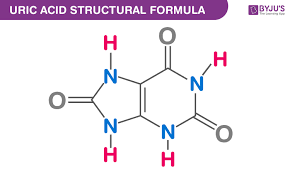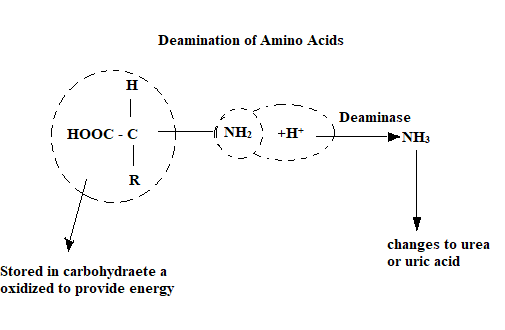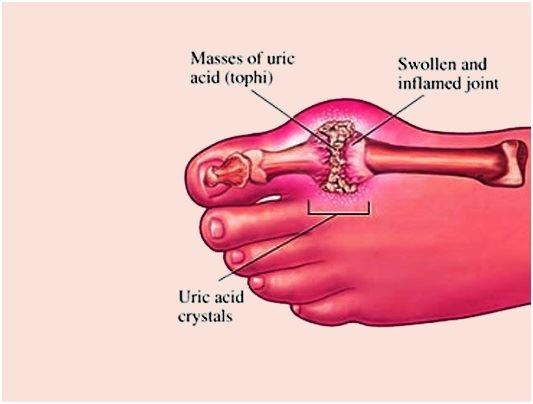What Is Uricotelism?
Uricotelism is the process of elimination of nitrogenous wastes from the body in the form of uric acid. The organisms which excrete uric acid are called uricotelic organisms.

Besides uricotelism, other major modes of excretion are briefed below
(a) Ammonotelism-Mode of excretion in which organisms give out ammonia as waste.
(b) Ureotelism-Mode of excretion where urea is given out as waste, e.g.humans, land vertebrates, earthworm, adult frog etc.
(c) Aminotelism-Mode of excretion where amino acids are directly excreted out, e.g. some molluscs and echinoderms.
How and why are nitrogenous wastes produced?
As we know, proteins are polymers of amino acids. During the metabolism of these amino acids, the amino group is removed by an enzyme called deaminase. This process is called deamination and it leads to the liberation of the amino group which is soon converted into either ammonia, urea or uric acid depending upon the organism and the water availability. The remaining part of an amino acid after the liberation of the amino group (carbon and hydrogen) are oxidised to release energy or stored as carbohydrates.

In which organisms, uricotelism is observed?
Uricotelism is observed in animals living in dry conditions and need to conserve water, eg.birds, reptiles (snakes and lizards), land snails, most insects and kangaroo rat.
Why is uricotelism preferred by certain organisms?
Uric acid is preferred by animals living in limited water availability since
(a) Uric acid is almost insoluble in water in comparison to ammonia which is highly soluble and urea which is fairly soluble in water. Also, 1 gm of uric acid requires only about 10ml of water for its removal whereas 1 gm ammonia requires about 300-500 ml of water and 1 gm of urea requires about 50 ml water for its removal.
(b) Uric acid is almost non-toxic. Ammonia is the most toxic nitrogenous waste followed by urea which is about 1 lac times less toxic than ammonia.
(c) Can be stored inside the body for longer periods inside the body as it is insoluble and non-toxic.
(d) Can be excreted out in the form of solid pellets. Guano is the white-coloured portion of the excreta of birds and bats which consists of uric acid crystals.
Do humans and other mammals also excrete uric acid?
Yes, humans and other mammals also excrete uric acid but in very small quantities. Uric acid is formed due to the breakdown of purines and pyrimidine (nitrogenous bases of nucleic acids which are taken in through diet)
Disorders related to uric acid metabolism
Gout – In humans, defective metabolism leads to accumulation of excess uric crystals to deposit in joints which causes a painful type of arthritis (inflammation of joints) called gout.

Kidney stones (Renal calculi) – If these crystals of uric acid precipitate in kidney tubules, they cause their blockage and lead to excruciating pain (renal colic). The patient experiences back pain which may spread to the thighs. In some cases where kidney stones occur in the urinary bladder, they cause painful urination and sometimes blood in the urine.
Questions and Answers
1. Terrestrial animals are generally either ureotelic or uricotelic, not ammonotelic, why? (NCERT)
Answer: Terrestrial animals are generally either ureotelic or uricotelic, not ammonotelic because of the following reasons:
(a)Ammonia is highly soluble in water and removal of 1 gm of ammonia requires 300-500 ml of water. Since aquatic animals live in water, they have access to abundant water which they can use for the removal of ammonia while terrestrial animals do not have access to such a large amount for water. So, terrestrial organisms switch to modes of excretion which require less amount of water for removal of wastes such as urea and uric acid.
(b)Ammonia is the most toxic form of nitrogenous waste, so it cannot be stored in the body for long periods of time. Aquatic animals use the water to remove large quantities of ammonia rapidly into the water through diffusion whereas urea and uric acid are less toxic and can be stored for long periods of time. Terrestrial animals can store and readily get rid of these wastes with a minimal amount of water.
2. Give examples of animals showing uricotelism.
Answer: Animals which show uricotelism are land gastropods, land reptiles (eg. snakes lizards), land crustaceans (eg Oniscus), birds, most insects (cockroaches), kangaroo, rat etc
3. What is guano? Mention one application of guano.
Answer: Guano is the excrement of birds rich in uric acid crystals. Guano represents the white coloured part of the faecal matter of birds and bats. Guano can be used as a fertiliser due to its high nitrogen, phosphorus and potassium content.
Explore more about uricotelism, Ammonotelism, Ureotelism, Aminotelism and more at BYJU’S.
Read Also:

Comments